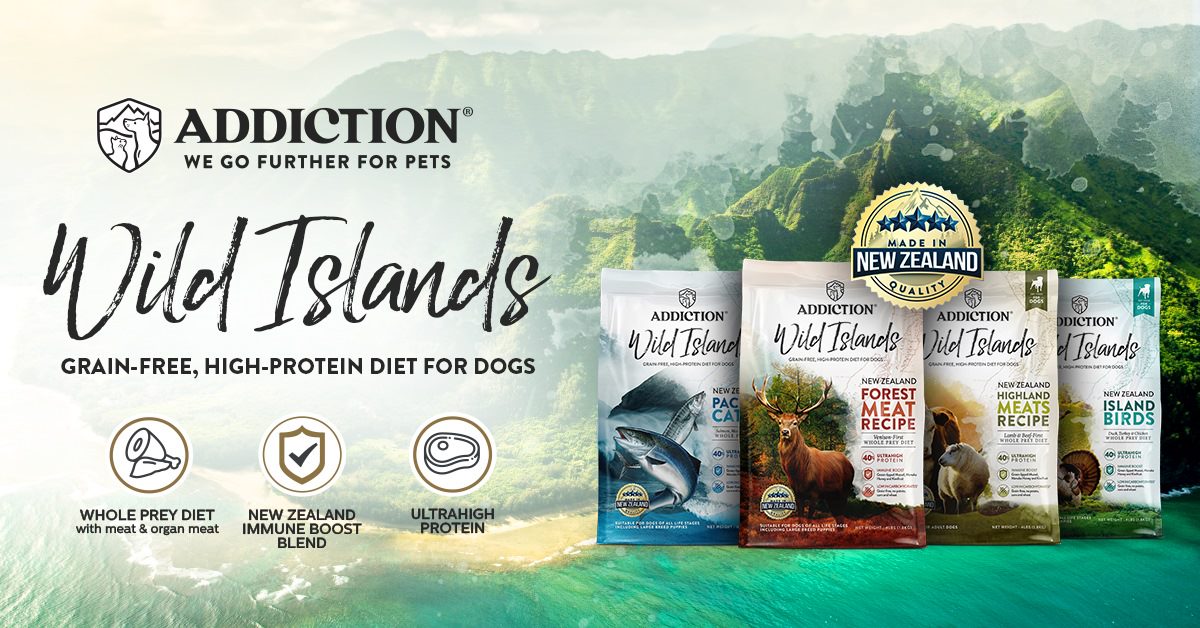All You Need To Know About Dog Food

Do you know why you should take time to read pet food labels? Pet owners should develop the habit of reading pet food labels and learn to decipher important information about the product. In addition to the list of ingredients, a statement of compliance with AAFCO standards are essential information that pet owners should try to seek first when buying pet food. Sufficient knowledge about your pet’s nutritional needs and how best to meet them can help you make educated and well-informed decisions when it comes to your pet’s diet.
How Pet Foods Are Made
There are 2 main types of pet food – dry pet food (kibbles) and wet pet food (canned). Knowing the manufacturing process that these pet foods undergo can help you understand better the pros and cons of each one. The main difference between kibbles and canned pet foods is the moisture content. Kibbles contain about 10-12% moisture while canned pet food has about 70-80%. Canned pet foods generally have less preservatives because the canning process itself is already a technique to preserve foods.
1. How kibble is produced
The most common process that is used in making kibble is extrusion. It is the same process that is used in making puffed breakfast cereals. The ingredients undergo mixing, cooking, shaping, and forming. The machine that is used for this purpose is called an extruder. Before kibbles are placed in sealed packages, they are coated with natural flavors. They are also sprayed with fats, oils, vitamins, and minerals.
2. How canned pet food is made
Canned pet foods are made using a different type of machine. After the ingredients are cooked, thickeners or gels are added before the finished product is poured into cans, vacuum-sealed, and sterilized before being labeled.
All Types Of Dog Food Explained
Dog food comes in different forms – dry dog food, wet dog food, semi-moist dog food, home-cooked, and raw dog food. Knowing the difference between each of these products, as well as their pros and cons, can help you choose what’s best for your dog.
1. Kibble or dry dog food
The ingredients of kibble or dry dog food undergoes an extrusion process that result in a product with a lower moisture content. Although they are the most cost-effective among the various types of dog food, they are generally carb-heavy.
2. Canned dog food
Compared to kibbles, canned dog food has a high moisture content (about 70-80%). Dogs find canned food tastier but these products tend to be more expensive than kibbles.
3. Semi-moist dog food
These products are naturally chewy and are popular treats for dogs. However, they contain the least amount of nutrients compared to other types of dog food.
4. Home-cooked dog food
Because of the many pet food recalls that frequently happen, many pet owners choose to make home-cooked meals for their pet dogs. However, this will require the expertise and assistance of a pet nutritionist in formulating a ration for your dog to ensure that your dog’s home-cooked food is nutritionally balanced.
5. Raw dog food
A raw dog food diet is an effort to mimic the diet of the dog’s wild ancestors. The diet is primarily composed of raw meat, bones, and organs. Since the ingredients don’t undergo processing, there is maximum retention of vital nutrients that are available for your dog. However, the possibility of pathogens in raw meat does exist.
Read more about the different types of dog food, including their pros and cons.
Which Ingredients Should The Best Dog Food Contain?

The type of ingredients in pet food is a very important factor in determining the quality and nutritional benefits of the product. Responsible pet owners should walk the extra mile to learn more about the diet of their pets. Checking out the ingredients and other information on the label of the product are also important pre-requisites before buying pet food. A complete, balanced diet for pet dogs should have animal protein, carbohydrates, fat, minerals and vitamin supplements, and natural preservatives.
Animal protein should be a named meat and must be listed as the first ingredient. Knowing what type of meat your pet is eating is far more trustworthy than feeding a product that lists ingredients as just “meat” or “meat meal”. This is also true with fats. A named fat in the list of ingredients is better than one that is listed as “animal fat”.
Premium quality pet food has no place for artificial preservatives. While pet food containing natural preservatives tend to be more expensive, they are healthier and safer for pets.
Which Diet is The Best For Your Dog?
Picking out the best diet for your dog can be overwhelming, especially if you have no idea how to go about it. There are a variety of pet food trends and diets that you can choose from and knowing the difference between each one can help you make the right decision concerning your pet’s diet.
- “Grain-inclusive diet” – The quality of ingredients that are used, particularly the type of grains, can help determine the nutritional value of the diet. Grain by-products offer very little nutritional value while whole grains like oats and brown rice provide a better source of energy.
- Grain-free diet – This diet is great for allergy sufferers especially those with skin allergies and sensitive stomachs.
- High-protein diet – Different life stages vary in their requirement for protein. In general, puppies need at least 28% protein to meet their needs for growth and development, while adult dogs require only 25%.
- Low-protein diet – Dogs diagnosed with renal disease, or from kidney or liver failure can benefit from a low-protein diet.
- Diet for weight management – Dogs that are overweight or obese need to get rid of the extra pounds in a healthy manner. A good weight loss program includes a dog weight management guide coupled with regular physical activity.
- Senior pet food – Senior pets have special dietary needs to help prevent or reduce the effects of age-related problems.
- Sensitive skin diet – One of the common triggers of skin allergies is an ingredient in pet food. They will benefit from a special diet that contains no potential allergens.
- Hypoallergenic diet – Food allergy is a common problem among dogs. One of the best ways to prevent allergy flare-ups is feeding a hypoallergenic diet because it does not include common pet food allergens like soya, chicken protein, or wheat.
Check out more important information about the different types of diet, what they are indicated for, how your dog can benefit from them and make the best informed decision about which diet is best for your dog.
Importance of Dog Food Nutrients

The basic nutrients that should be present in dog food include protein, fats and oils, fiber, vitamins, and minerals. The importance of feeding a balanced ration to your pet cannot be stressed enough. Each nutrient in a pet food ration serves an important purpose. The physiological functions of the body as well as the animal’s health are dependent on the nutrients that are available for utilization.
1. Protein
Proteins are essential for growth and repair, as well as in various physiological functions of the body. Premium quality dog food should contain a named protein source. Low quality pet food may contain potato protein, vegetable protein, maize gluten, or soya meal which are cheaper protein sources. However, these non-meat protein sources are more difficult to digest, increasing the chances of food intolerance.
2. Fats and oils
Dogs need essential fatty acids (such as omega-3 and omega-6) in their diet because they are unable to manufacture these nutrients in their bodies. Fats and oils are vital in various physical and physiological functions of the body including skin and hair coat health, development and function of the brain and the parts of the nervous system, blood clotting, and learning ability to name a few.
3. Fiber
Although fiber has zero calories, it plays an important role in promoting the health and function of the gastrointestinal tract. It plays a role in water regulation in the intestines, drawing water from surrounding tissues when the dog is constipated or soaking excess water in the colon when the animal is suffering diarrhea.
4. Minerals
Dogs require essential minerals for optimum body function. Some of these minerals include calcium, phosphorus, sodium, and zinc.
5. Vitamins
Vitamins are generally grouped into two – water-soluble vitamins (Vitamins C and B-complex vitamins) and fat-soluble vitamins (Vitamins A, D, E, and K). Each vitamin plays an important role in keeping dogs healthy and fit.
Choosing the Right Dog Food for Your Dog at All Lifestages
The importance of giving the right pet food cannot be overemphasized. There are several important factors that should be taken into consideration when choosing pet food. These include the dog’s life stage, health, lifestyle or activity level. Each of these factors have different nutritional requirements that should be met on a daily basis. Thus, there are pet food products specially formulated for puppies, adults, senior pets, performance pets, and pets with special health issues. Knowing the specific nutritional needs of each life stage can help you pick out the best food for your pet.
1. Feeding puppies
Puppy food contain higher amounts of protein to meet a puppy’s demand for growth and developing. Introducing puppy food to puppies that are still consuming milk from their mother should be done gradually to prevent digestive upsets.
2. Feeding adult dogs
Adult dogs should be fed maintenance diets. They won’t need as much protein as puppies because they have passed the growth stage. For dogs diagnosed with special health issues, a veterinarian may prescribed a special diet.
3. Feeding senior dogs
Senior dogs won’t need as much calories as they slow down and deal with the age-related effects of wear and tear. Feeding a low-calorie premium quality diet helps ensure that senior pets have a nutritionally balanced diet. Special prescription diets may be recommended by veterinarians for senior pets suffering from specific health issues like diabetes, kidney disease, heart problems, or liver disease.
4. Feeding nursing dogs
Mother dogs have special nutritional needs during periods of pregnancy and lactation. They will benefit from a diet that contains nutrients and calories that will help them maintain an ideal body weight while meeting the nutritional needs of pregnancy and lactation.








